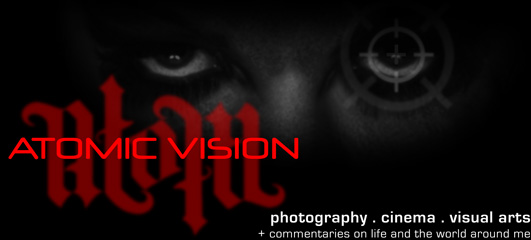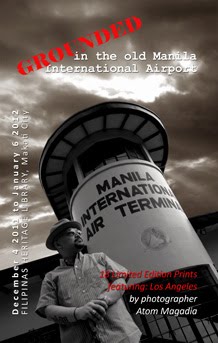"Dagsin" ("Gravity" in English) took twenty years to evolve into a movie. I originally came up with the prototype of the story when I was still a film student at the Art Center College of Design in Los Angles in the mid-1990s. The original short-film screenplay was then titled, "This Mortal Coil," and it was submitted as an exercise/assignment for my Screenplay Writing Class. It was just eight pages long, and it only contained what eventually ended up as the "climactic scene" in the finished movie.
 |
| Tommy Abuel as Justino Razon, with Lotlot De Leon as his adopted daughter Mercy and Sue Prado as his Private Nurse Grace. |
The original short script told the story of an old paraplegic resident of an American Retirement Home-- a wheelchair bound man (originally Caucasian) who recently lost his wife of fifty years. Wandering into their apartment after her Interment, he feels the weight of his sorrow so strongly that he decides to hang himself from the ceiling rafters of their bedroom.
I was going through a rough phase in my love life at that time that the Romantic in me chose to write about an ideal relationship, where someone was so in love that he would be completely devastated at the lost of his beloved-- a storybook type of Love Story. Besides, the idea of a wheelchair bound paraplegic man hanging himself with his feet still touching the ground yet powerless to escape his chosen fate (self-pity can soar with imagination), was such a strong poetic image, indelibly cinematic and memorable that it would guarantee me a good grade for the class!
Years later, the original seed concept for "Dagsin" resurfaces. After writing half a dozen full-length feature spec. scripts, I was looking for a short-film project to jump start my filmmaking career and "This Mortal Coil" was the prime candidate. So I began rewriting the original script, since I thought that the suicide sequence was not strong enough to stand by itself. But as I added simple flashback sequences, it started to get longer and longer. Soon, it was twenty pages long and that was just the backgrounder to the love story, I haven't even begun to say, what I really wanted to say.
By definition, a short-film is just about eight minutes long (or an 8-page script). Anything longer than that, and your chances of entering it in a major international competition gets slimmer and slimmer. Cannes for example only accepts 15 mins. maximum for their Short Film entries. Knowing that my story has potential beyond being just a short movie, and understanding that short films do not have a commercial market, I then committed to writing the story I really want to tell no matter how long the screenplay ended up becoming. During that time, I was already married for more than ten years (found a partner I want to spend my life with), had kids and recently suffered a Stroke. I wanted the story to reflect everything I have learned and have gone through in my life up to that point. Thankfully the first draft I wrote totaled just one hundred twenty pages in Movie Magic (Hollywood standard Screenplay Software) - which counts each page to be roughly equivalent to a minute of screen time.
 |
| Benjamin Alves as Young Justino Razon, Janine Gutierrez as Young Corazon Bishop (Mrs. Razon) and Alex Diaz as John Bishop, Jr. in the flashback sequences. |
The first thing I incorporated to my original story was the flashback sequences. I knew by instinct that I had to make my viewers fall in love with my main characters first, for them to empathize with the loss they will be experiencing as the story unfolds. Making the audience spectators of the romance between Justino and Corazon from the beginning and making them experience the love that develops between the couple through the years, was my main goal. It was a deliberate decision on my part to make the film essentially a "Love Story" in terms of classification and genre, since the main theme of the movie even then was "only Love can save us from the pain and tragedies of life."
The historical breath and timeline of the story came naturally when I plotted Justino's life in reverse. By his present age, he would have been born in the 1920's and would have gone through World War II and the Martial Law era in the 1970's. The decision to place him at the front row of these major events as they unfolded was elementary. Since he was an action oriented man (idealistic, heroic and strong-willed) who would eventually be crippled by the very nature of human existence, making him an active participant in the critical periods of our country's history would effectively magnify the tragedy and irony of his fate. It was at this point of writing when I realized that Justino was a classic "Sisyphean" character.









